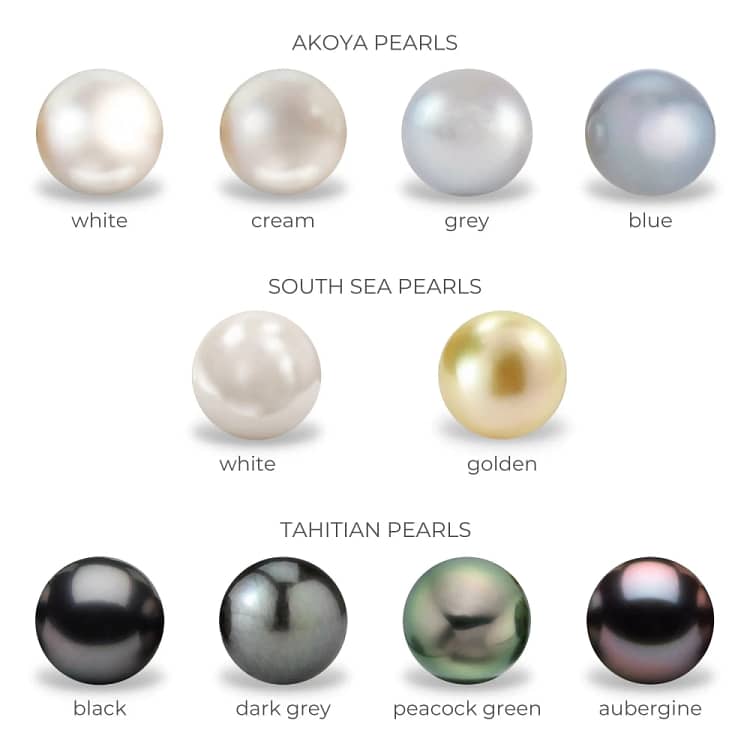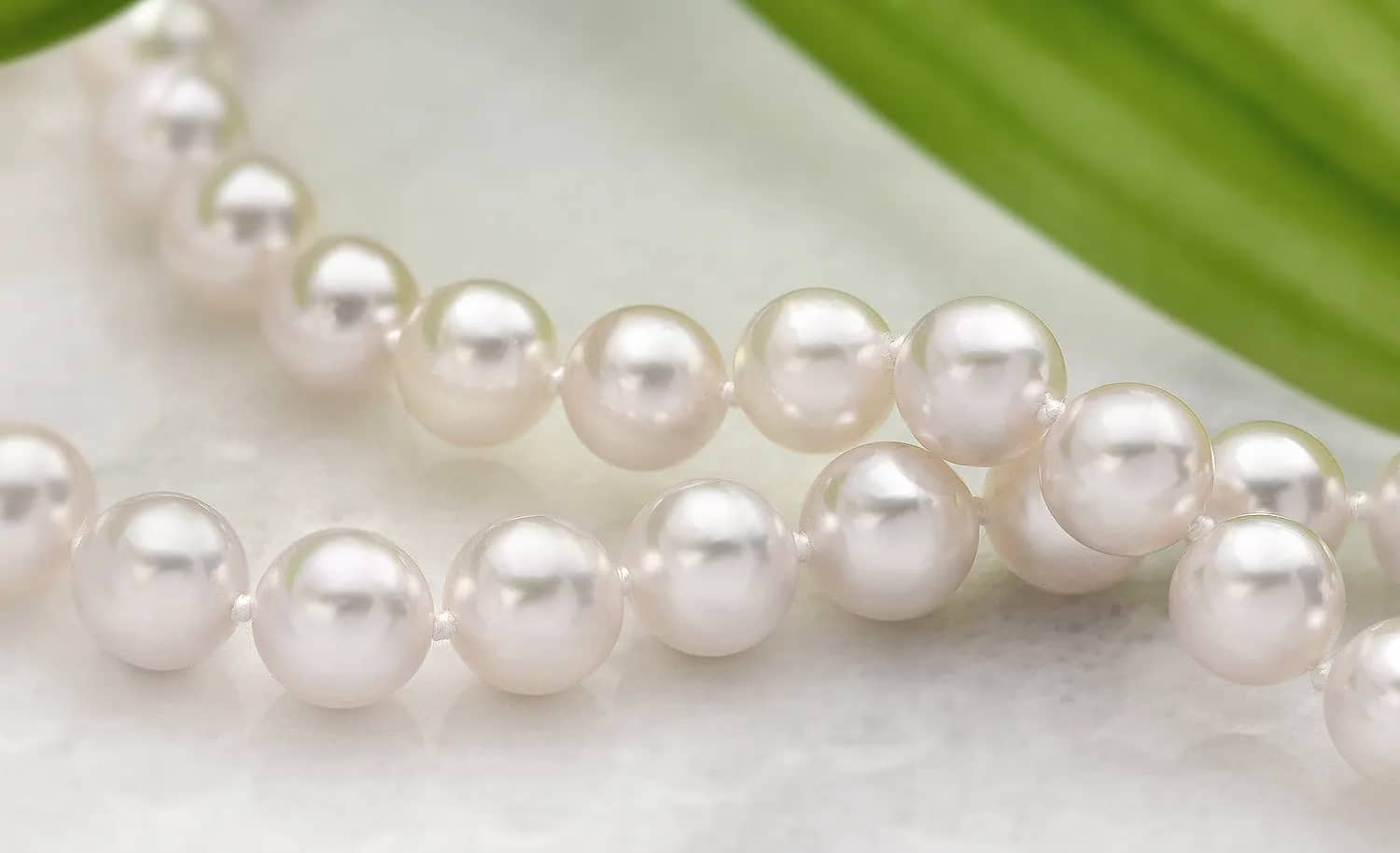Are you interested in learning more about the world of pearls? Do you want to know about the different types of pearls and how they are cultivated? This article will provide you with a comprehensive overview of the fascinating world of pearls. You will learn about the different types of pearls and the cultivation process used to create them.
Types of Pearls
There are various types of pearls, each with its unique characteristics and value. Here are some of the most popular types of pearls:
1. Akoya Pearls – These pearls are the classic white pearls that most people think of when they hear the word “pearl.” They are grown in saltwater and are typically small in size, ranging from 2mm to 10mm.
2. Tahitian Pearls – These pearls are grown in black-lipped oysters and are known for their dark colors, ranging from black to gray to green. They are larger than Akoya pearls, with sizes ranging from 8mm to 16mm.
3. South Sea Pearls – These pearls are the largest and most valuable type of pearl. They are grown in large oysters and can range in color from white to gold. Sizes can range from 9mm to 20mm.
4. Freshwater Pearls – These pearls are grown in mussels and are typically less expensive than saltwater pearls. They come in a variety of shapes, sizes, and colors.
It’s important to note that not all pearls are perfectly round or smooth. Some may have irregular shapes or blemishes, which can affect their value.

Pearl Cultivation Process
Pearls are a timeless symbol of beauty and elegance, and are highly sought after for their unique beauty. Cultured pearls are created by a process of pearl cultivation, which involves the introduction of a small irritant into a mollusk, and the mollusk’s secretion of a material to protect itself from the irritant. This material is known as nacre, and is the substance that forms the beautiful pearl.
The pearl cultivation process begins with the introduction of a small irritant, such as a piece of mantle tissue from another mollusk, or a bead, into a mollusk’s gonad or mantle. Once the irritant is in place, the mollusk begins to secrete nacre around it in layers. As the layers of nacre build up, the pearl gradually grows in size and shape. The pearl cultivation process can take anywhere from 6 months to several years, depending on the size and type of pearl being produced.
Pearls can be produced in a variety of shapes, sizes, and colors. The type of pearl produced depends on the species of mollusk used for pearl cultivation, as well as the type of irritant used. Freshwater pearls, for example, are produced by freshwater mussels, and can range in color from white to black. Saltwater pearls, on the other hand, are produced by oysters, and can range in color from white to pink, yellow, and even blue.
Pearl cultivation is a delicate process, and requires a great deal of skill and expertise. In order
History of Pearls
Pearls have been valued for their beauty for centuries. In fact, they are one of the oldest gemstones known to man. The history of pearls dates back to ancient times, with evidence of pearl jewelry found in the tombs of Egyptian pharaohs.
Pearls were also highly prized in ancient Rome and Greece, where they were associated with wealth and power. In China, pearls were believed to have medicinal properties and were used to treat various ailments.
During the Middle Ages, pearls were a symbol of purity and were often worn by brides. They were also used as currency and were traded along the Silk Road.
In the 19th century, the discovery of pearl oysters in Australia and Tahiti led to a boom in the pearl industry. Today, pearls are cultured in many countries around the world, including Japan, China, and Indonesia.
If you’re interested in learning more about the history of pearls, there are many resources available online. The Smithsonian Museum of Natural History has a comprehensive article on the subject, and the Gemological Institute of America has a wealth of information on the science of pearls.
Pearl Grading System
The Pearl Grading System is used to determine the quality of pearls based on various factors. The system takes into account the pearl’s size, shape, lustre, surface quality, colour, and nacre thickness. The grading scale ranges from A to AAA, with AAA being the highest quality.
Pearls with a high lustre and few surface blemishes are considered to be of higher quality. Pearls with a round shape are also highly valued, although some irregularly shaped pearls can be highly sought after. The colour of a pearl can also affect its value, with white and cream pearls being more common and therefore less valuable than rarer colours like pink or black.
Nacre thickness is another important factor in the grading system. Nacre is the substance that makes up the pearl’s outer layer, and thicker nacre indicates a higher quality pearl. The thickness of the nacre can also affect the durability of the pearl.
Understanding the Pearl Grading System can help you make informed decisions when purchasing pearls. It’s important to note that different types of pearls, such as freshwater and saltwater pearls, may have different grading systems.
Pearl Jewelry Styles
Pearls have been treasured for their beauty and rarity for centuries. Pearl jewelry is timeless, classic, and elegant. There are several styles of pearl jewelry that are available in the market, and each style has its unique charm.
- Pearl Necklaces: Pearl necklaces come in different lengths, and each length has its own name. Choker, princess, matinee, opera, and rope are the most common lengths. They can be worn for both formal and casual occasions.
- Pearl Earrings: Pearl earrings are simple yet elegant. They come in different styles, such as studs, hoops, dangles, and drops. They can be worn for any occasion.
- Pearl Bracelets: Pearl bracelets are delicate and can be worn alone or layered with other bracelets. They come in different styles, such as bangles, cuffs, and chains.
- Pearl Rings: Pearl rings are timeless and classic. They come in different styles, such as solitaire, cluster, and halo. They are perfect for any occasion.
When choosing a pearl jewelry style, it’s important to consider the occasion, personal style, and budget. Additionally, it’s important to choose pearls that are of good quality and properly cared for.

Caring for Pearls
Caring for pearls is an important aspect of owning these precious gems. Pearls are delicate and require proper handling and storage to maintain their lustre and beauty. Here are some tips on how to care for your pearls:
1. Keep them away from chemicals: Pearls are sensitive to chemicals, including perfume, hairspray, and cosmetics. These substances can damage the surface of the pearls and dull their shine. It’s best to apply these products before putting on your pearls.
2. Store them carefully: Pearls should be stored in a soft pouch or jewellery box separate from other jewellery. Avoid storing them in a plastic bag as this can cause them to dry out and crack.
3. Clean them gently: Use a soft, damp cloth to wipe your pearls after wearing them. Don’t use harsh chemicals or abrasive materials as this can damage the surface of the pearls.
4. Restring them periodically: Pearl strands can stretch over time, so it’s important to have them restrung periodically. This will help to prevent breakage and keep your pearls looking their best.
Overall, caring for pearls is a simple process that requires a little bit of attention and care. By following these tips, you can ensure that your pearls remain beautiful and lustrous for years to come.

In exploring the world of pearls, we hope the reader has learned about the different types of pearls and the cultivation process used to create them. From classic Akoya pearls to rare and valuable South Sea pearls, each type has its unique characteristics and value. Understanding the pearl grading system and caring for pearls properly can help maintain their beauty.
Conclusion:
Pearls, often referred to as the “Queen of Gems,” have been cherished for their beauty and elegance for centuries. Their formation process, which occurs naturally inside mollusks or through human intervention in pearl farms, is a testament to nature’s wonder. With various types like Akoya, Tahitian, and South Sea, each pearl brings its unique luster and charm. The cultivation process, whether it’s the traditional method or the modern cultured technique, requires precision and care. As symbols of purity and elegance, pearls remain a timeless choice for jewelry, adorning wearers with a touch of classic sophistication.
